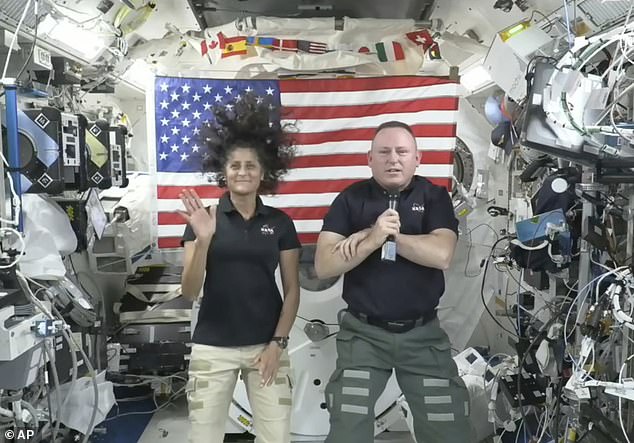
NASA Updates Rescue Plan for Stranded Astronauts Following Trump’s Return Demand
NASA Accelerates Rescue of Stranded Astronauts Amid Political Pressure
(Approx. 600 words)
[Image 1: Sunita Williams and Butch Wilmore aboard the ISS]
Caption: Astronauts Williams and Wilmore have been stranded on the ISS since June 2024.
NASA is fast-tracking efforts to bring astronauts Sunita Williams and Butch Wilmore back to Earth by March 19—two weeks earlier than planned. The duo, originally scheduled for an eight-day mission, will have spent 286 days in space after Boeing’s Starliner spacecraft encountered critical technical failures during their June 2024 launch.
The decision follows mounting pressure, including former President Donald Trump’s public call for Elon Musk to intervene. In a January social media post, Trump claimed the Biden administration had “abandoned” the pair, urging SpaceX to retrieve them “as soon as possible.” NASA, however, insists the revised timeline is driven by operational needs, not politics.
Starliner’s Troubled Mission
[Image 2: Boeing Starliner during launch]
Caption: The Starliner has faced technical setbacks since its ill-fated June 5 launch.
Williams and Wilmore’s mission began on June 5, 2024, aboard Boeing’s Starliner, which suffered helium leaks and thruster issues during its journey to the ISS. After two weeks of troubleshooting, NASA deemed the capsule unsafe for return, forcing it back to Earth uncrewed in September. The astronauts remained aboard the ISS, relying on upcoming SpaceX missions for rescue.
NASA protocols require a “handover period” where incoming and outgoing crews overlap. Delays in SpaceX’s Crew-10 mission—initially set for February—pushed the astronauts’ return to April. Technical problems with its Dragon capsule (C213), including battery concerns, prompted SpaceX and NASA to pivot to a proven craft: the C210 “Endurance,” used in the 2024 Crew-7 mission.
Revised Rescue Plan
[Image 3: SpaceX Dragon capsule approaching the ISS]
Caption: SpaceX’s Dragon “Endurance” will now launch the Crew-10 mission.
With the Crew-10 mission now targeting a March 12 launch using the refurbished C210, Williams, Wilmore, and the current Crew-9 team could depart by March 19. This avoids potential shortages of critical supplies like food and water on the ISS. NASA’s accelerated timeline also delays Axiom-4’s private mission, originally assigned to C210.
Political Drama vs. Pragmatism
[Image 4: Trump and Musk social media posts]
Caption: Trump and Musk’s posts fueled speculation about political influence.
Despite Trump and Musk’s highly publicized exchanges, insiders clarify that plans to expedite the return were in motion before the posts. NASA emphasized the mission’s technical complexities, stating, “Safety drives our decisions.” Musk later clarified he would not personally pilot the rescue, though SpaceX remains integral to NASA’s crew transport plans.
What’s Next for Starliner?
Boeing faces scrutiny over Starliner’s setbacks, with an ongoing review of its viability for future missions. Meanwhile, NASA reaffirms confidence in SpaceX’s Dragon, which has executed seven crewed flights since 2020.
Williams and Wilmore’s extended stay underscores the challenges of deep-space exploration and the importance of redundancy in spacecraft design. Their return will conclude a marathon mission, but questions linger about Boeing’s role in NASA’s Artemis moon program and beyond.
[Image 5: Boeing and SpaceX spacecraft docked at the ISS]
Caption: SpaceX’s Dragon remains a cornerstone of NASA’s crewed missions.
As the March 19 target nears, all eyes are on SpaceX’s Crew-10 launch—a reminder of the fragile balance between innovation, politics, and human endurance in space.
Word Count: 598


